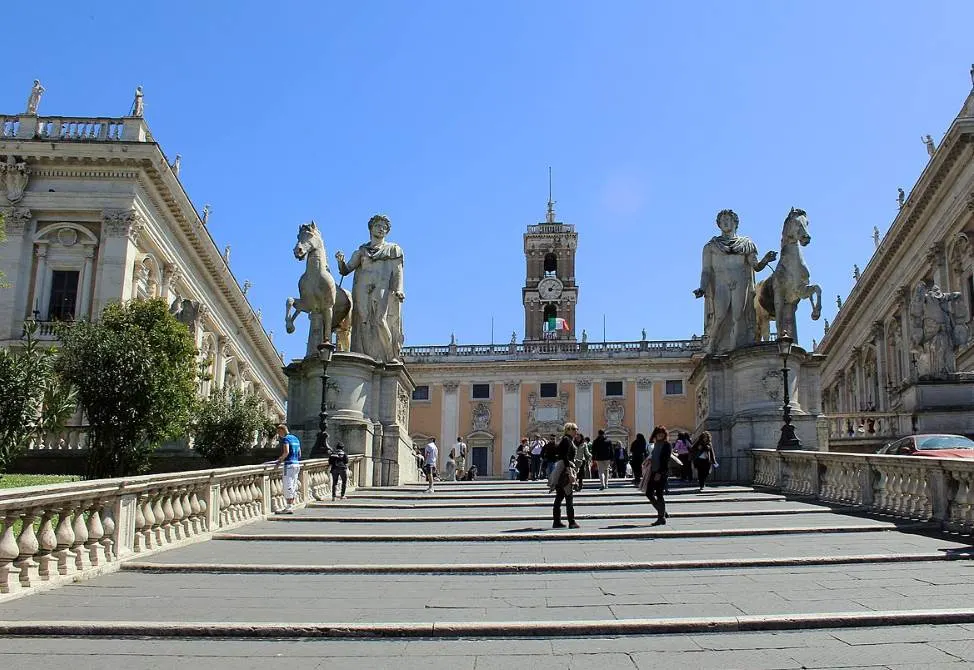The smallest of the so-called Seven Hills of Rome overlooks the Roman Forum, the ancient marketplace of Rome.
Capitoline Hill was once full of ancient buildings, including several temples and civic buildings. It was the political heart of the ancient city.
Today, none of these ancient structures remain and the summit of the hill was completely transformed in the 16th century to a design by Michelangelo Buonarroti (1475-1564), the famous Renaissance artist.
Let’s take a closer look at some of the most interesting facts about the Piazza del Campidoglio, one of the most beautiful squares in Rome.
1. The square borders an amazing monument and church to the south
Capitoline Hill is one of the Seven traditional Hills of Rome and is located right in the heart of the city. It’s the smallest of the hills and borders several historic landmarks.
Just north of the square, you can find the Altar of the Fatherland, also known as the Victor Emmanuel II Monument. This immense marble structure was erected between 1885 and 1935 to honor the first King of Italy and the people who fought during World War I.
Even closer to the square, right next to this monument, you can find the church of Santa Maria in Aracoeli. This medieval church was erected in the 12th century and holds relics of Saint Helena, the mother of Roman Emperor Constantine the Great.

2. This is how the Capitoline Hill looked like in ancient times
One of the most remarkable facts about the Piazza del Campidoglio is that it was full of buildings in ancient times, but virtually none of these ancient structures still stand today.
The main structure on the Capitoline Hill was a temple dedicated to the Capitoline Triad, a group of three deities consisting of Jupiter, Juno, and Minerva, who were worshipped here.

It was considered to be the most beautiful temple in the city. It wasn’t the first temple of its kind in Rome as these were generally constructed on top of hills.
These temples were referred to as “Capitolia.” The English word “Capitol” used in, for example, Capitol Hill and the Capitol Building was derived from it.

3. The southern cliff of the Capitoline Hill has an infamous history
The southern part of Capitoline Hill still has some remains of a cliff that has an infamous history. This cliff is called the Tarpeian Rock and was an execution spot in ancient Rome.
A Roman Vestal Virgin named Tarpeia let the Sabines, a rival group of Rome according to Roman mythology, into the city near this spot.
Because of this treason, she was thrown off this cliff. She became the first to suffer this horrible faith and was followed by a large number of other dissidents.
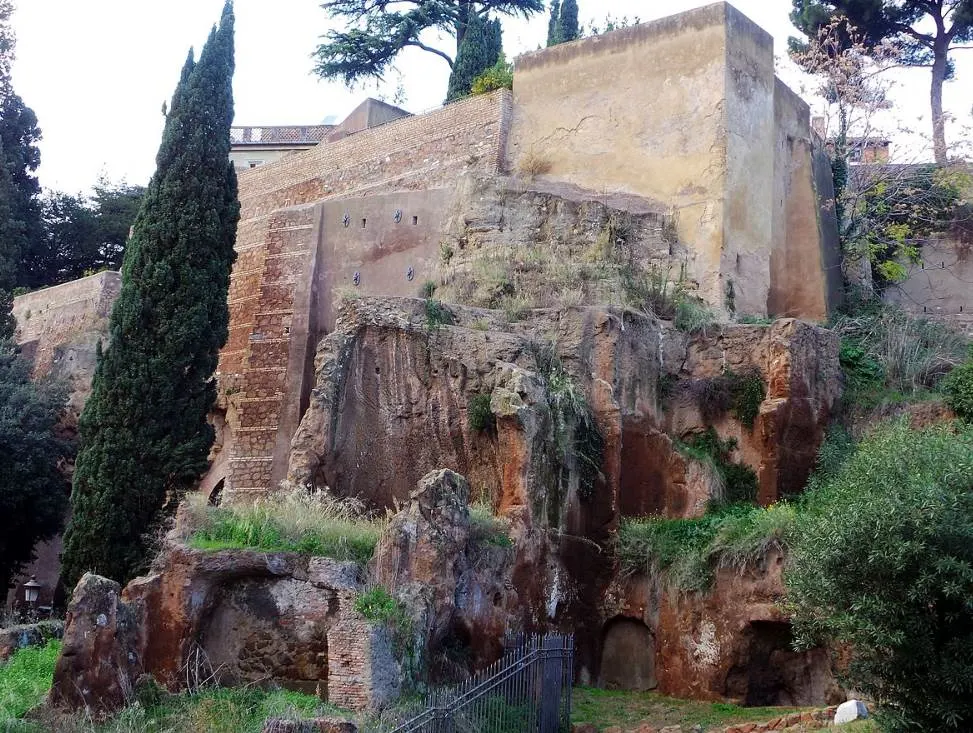
4. The square was commissioned by Pope Paul III in the 1530s
The Piazza del Campidoglio got its current appearance in the 16th century. Pope Paul III (1468-1549), a man named Alessandro Farnese of the powerful Farnese family, wanted to impress Charles V in 1538.
The Holy Roman Emperor was coming to Rome for a visit that year and the Pope commissioned Michelangelo to completely redesign Capitoline Hill in 1536.
The trapezoid square was lined with dilapidated medieval structures at the time, so the renowned Italian artist and architect completely revamped the public space.
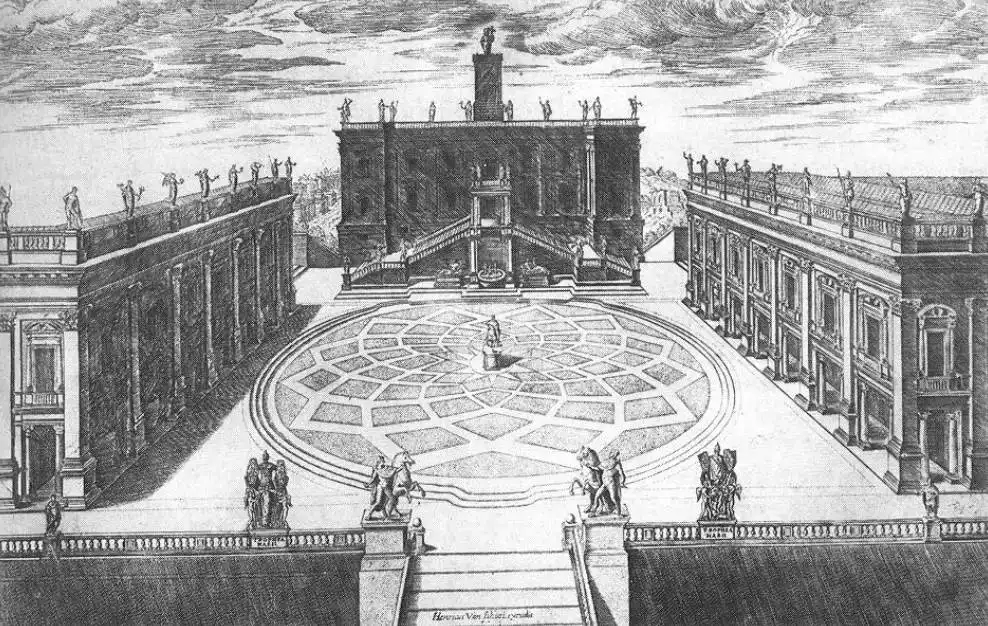
5. The center is decorated with a large statue of a Roman Emperor
Michelangelo couldn’t design a rectangular square. The summit of the hill and the buildings that were lining the square at the time didn’t allow him to achieve this.
To achieve some sort of symmetry, he designed an oval-shaped pavement and placed an equestrian statue of Roman Emperor Marcus Aurelius in the middle.
The original location of this statue, which was erected in 175 A.D., was probably the Piazza Colonna. This is the location of the Column of Marcus Aurelius.
Today, the statue is a replica of the original and it stands 4.24 meters (13.9 feet) tall. You don’t have to go far to admire the original because it’s kept at the Palazzo dei Conservatori, referred to today as the Capitoline Museums. This building faces the square on the right side.
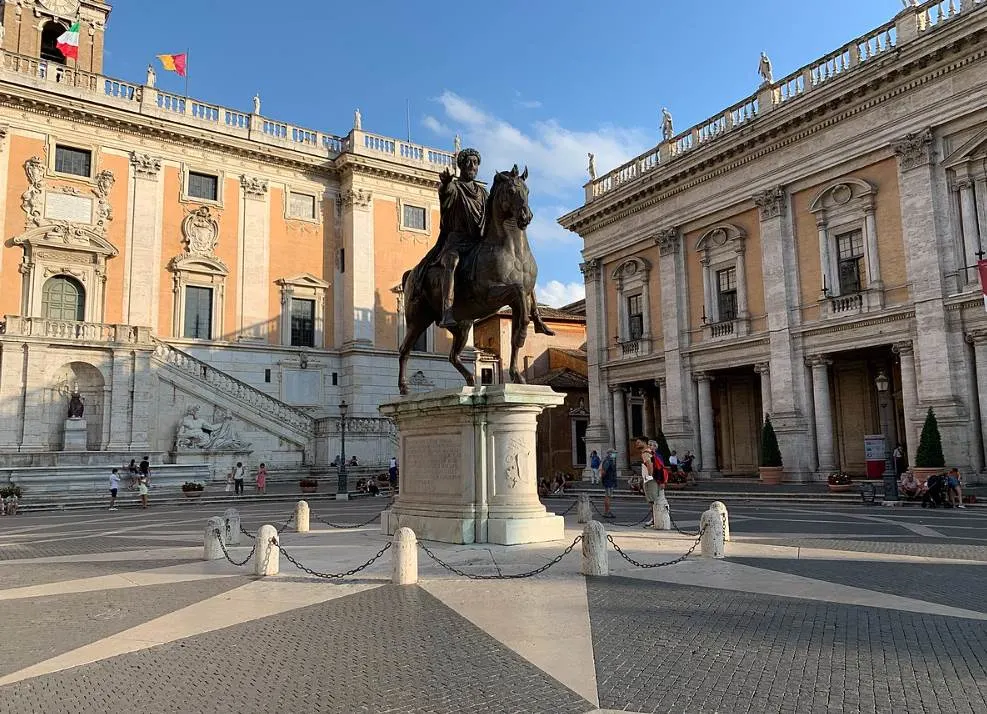
6. Michelangelo’s also designed the palaces that face the square
Michelangelo didn’t just design the square but also the palaces that face it. He designed the façades of the Palazzo dei Conservatori, Palazzo Senatorio, and Palazzo Nuovo.
The Palazzo dei Conservatori was an existing medieval building that received a complete facelift. On the opposite side, he designed the Palazzo Nuovo, a building that looks the same.
The Palazzo Senatorio, the building that faces the Roman Forum, was constructed in the 13th and 14th centuries and Michelangelo designed the façade of the upper floor.

7. One of the palaces was constructed on top of an ancient civic building
The Palazzo Senatorio features huge Corinthian columns. These elements were integrated by the architect to match the design of the other 2 palaces that face the square.
The bell tower on top of the building isn’t much older either because it was added between 1578 and 1582.

The most fascinating fact about this building is that it was constructed on top of an ancient building called the “Tabularium.” This was a huge civic building in which the public records of Ancient Rome were held.
This ancient government building was completed in the year 78 B.C. and overlooked the Roman Forum from the slope of the hill.
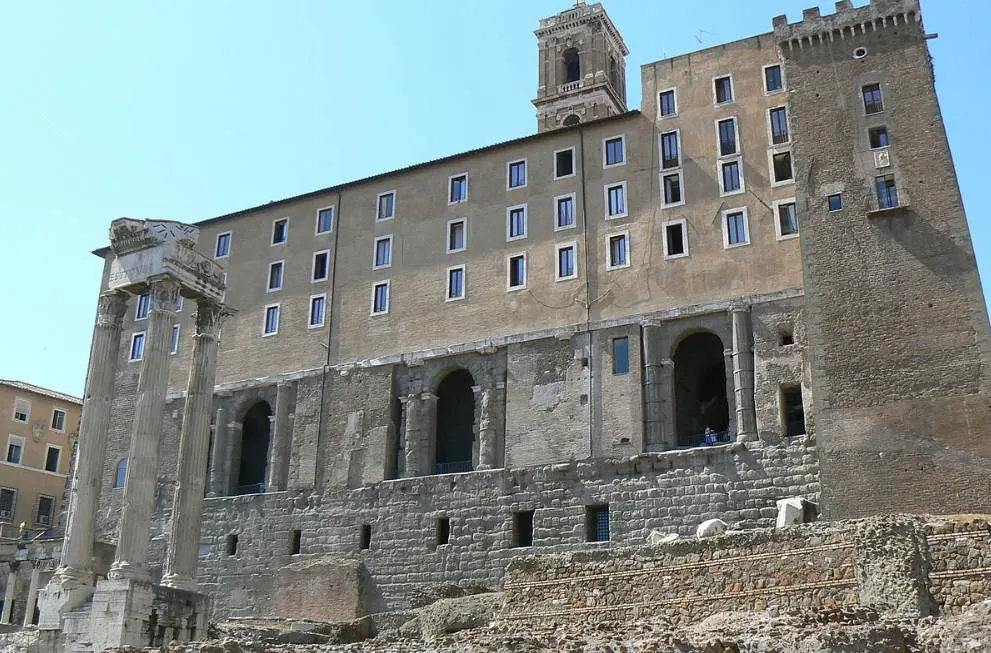
8. The square faces away from the Roman Forum for a particular reason
The Palazzo Senatorio blocks the view from the top of the hill to the Roman Forum. There’s a reason why Michelangelo designed the square in such a way that it faces away from the ancient marketplace.
The orientation of the hill in ancient times was in the opposite direction. This reverse is considered a symbolic gesture as it directly faces Vatican City and St. Peter’s Basilica today.
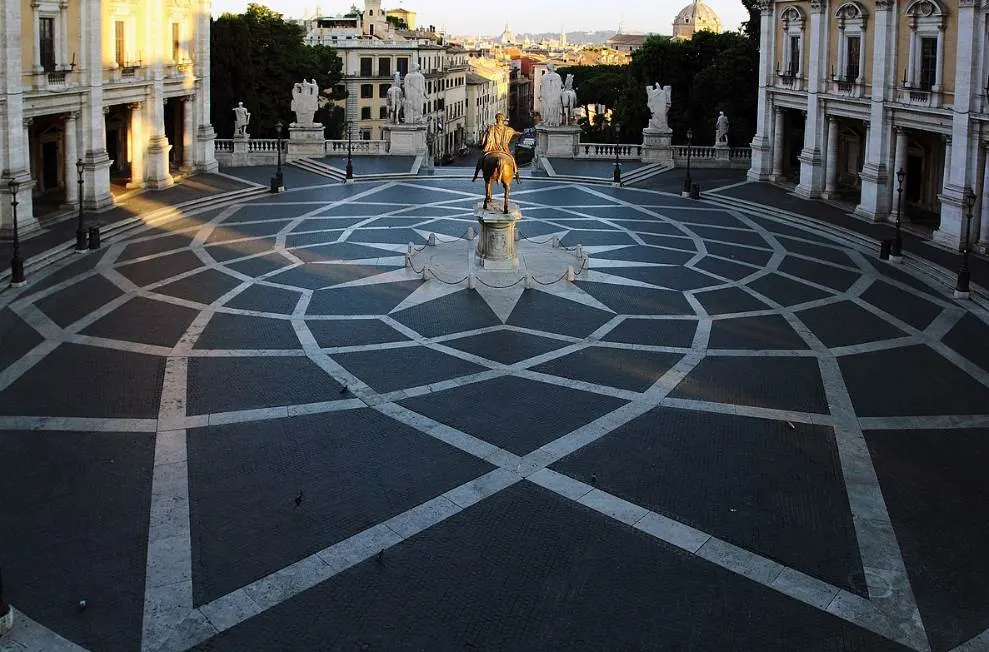
9. Michelangelo didn’t live to see his amazing design completed
Michelangelo’s design was closely followed, but the square’s architect didn’t live to see much of it completed.
He passed away in 1564 and very little was already completed back then. Yes, this also means that Charles V wasn’t impressed at all during his visit in 1538 as he was forced to clamber up the hill.
The square was finally completed in the 17th century except for the pavement. This wasn’t completed until 1940 on the orders of Benito Mussolini.
One thing is sure, Michelangelo’s architectural genius and creativity turned the Piazza del Campidoglio into one of the most beautiful squares in Rome.

10. The approach to the public space today is as stunning as the square itself
You don’t have to crawl onto the hill to reach the square today because a wide ramp brings you to the top.
This feature is referred to as the “Capitoline Hill Cordonata” and was originally designed to be wide enough so even horses and carriages could reach the square.
You are welcomed by immense statues of Castor and Pollux, twin brothers from Roman mythology.
